Ethiopian History
Ethiopia is the oldest independent country in Africa and one of the oldest in the world. What are believed to be the oldest remains of a human ancestor ever found, which have been dated as being some five million years old, were discovered in the Awash Valley in Ethiopia. This beats the discovery of “Lucy”, a 3.2 million year old skeleton, who was unearthed in the same area in 1974. The Greek historian Herodotus, of the fifth century BC, describes ancient Ethiopia in his writings, while the Bible’s Old Testament records the Queen of Sheba’s visit to Jerusalem where “she proved Solomon with hard questions”. Matters clearly went further than that because legend asserts that King Menelik – the founder of the Ethiopian Empire – was the son of the Queen and Solomon.
Remains of the Queen of Sheba’s palace can still be seen today in Axum, in the province of Tigray, northern Ethiopia. Axum is also home to many other extensive historical sites, including the home of the Ark of the Covenant, brought there from Jerusalem by Menelik. Missionaries from Egypt and Syria reached Ethiopia in the fourth century and introduced Christianity. In the seventh century, the rise of Islam meant Ethiopia was then isolated from European Christianity. The Portuguese re-established contact with Ethiopia in the 1500s primarily to strengthen their control over the Indian Ocean and to convert Ethiopia to Roman Catholicism. A century of religious conflict followed resulting in the expulsion of all foreign missionaries in the 1630s.
This period of bitter conflict contributed to Ethiopian hostility towards foreign Christians and Europeans which persisted until the twentieth century and was a factor in Ethiopia’s isolation until the middle of the nineteenth century. From the 1700s, for roughly 100 years, there was no central power in Ethiopia. This “Era of the Princes” was characterized by the turmoil caused by local rulers competing against each other. In 1869, however, Emperor Tewodros brought many of the princes together, and was a significant unifying force. He was succeeded by Emperor Yohannes, who built upon the efforts made by Tewodros, as well as beating off invasion attempts by the Dervish and the Sudanese. Emperor Menelik II reigned from 1889 to 1913, fending off the encroachment of European powers. Italy posed the greatest threat, having begun to colonize part of what would become its future colony of Eritrea in the mid 1880s. In 1896 Ethiopia defeated Italy at the Battle of Adwa, which remains famous today as the first victory of an African nation over a colonial power.
In 1916, the Christian nobility deposed the sitting king, Lij Iyassu because of his Muslim sympathies and made his predecessor’s, (King Menelik 11 1889 – 1913), daughter, Zewditu, Empress. Her cousin, Ras Tafari Makonnen (1892-1975) was appointed regent and successor to the throne. Zewditu died in 1930, after which the regent – adopting the name Haileselassie – became Emperor. His reign was interrupted in 1936 when Italian forces briefly invaded and occupied Ethiopia. Haileselassie then appealed to the League of Nations, but that appeal fell on deaf ears and he fled to exile in the UK, where he spent five years until the Ethiopian patriotic resistance forces with the help of the British defeated the Italians and he returned to his throne. Haileselassie then reigned until 1974 when he was deposed and a provisional council of soldiers (the Derg, meaning committee) seized power and installed a government which was socialist in name and military in style. Fifty nine members of the Royal Family and ministers and generals from the Imperial Government were summarily executed. Haile Selassie himself was strangled in the basement of his palace in August 1975.
Major Mengistu Haile Mariam assumed power as head of state and Derg chairman after having his two predecessors killed. His years in office were marked by a totalitarian style government and the country’s massive militarisation financed and supplied by the Soviet Union and assisted by Cuba. The brutality of the regime over a period of 17 years – aided by droughts and famine – hastened the Derg’s collapse. Insurrections occurred throughout Ethiopia, particularly in the northern regions of Tigray and Eritrea. In 1989, the Tigrayan People’s Liberation front (TPLF) merged with the Amhara and Oromo liberation fronts (EPDM & OPDO) to form the Ethiopian Peoples’ Revolutionary Democratic Front (EPRDF). In May 1991, the EPRDF forces advanced on Addis Ababa forcing Mengistu to flee to Zimbabwe.
In 1991, the Transitional Government of Ethiopia (TGE) was set up from the EPRDF and other political parties in the country with an 87 strong Council of Representatives and a transitional constitution. Meanwhile, in May 1991, The Eritrean People’s Liberation front (EPLF), led by Isaias Afworki assumed control of Eritrea after 30 years of struggle and established a provisional government. This ran Eritrea until April 1993 when Eritreans voted for independence in a UN monitored referendum. In Ethiopia, President Meles Zenawi and members of the TGE pledged to oversee the formation of a multi-party democracy. The election for a 548 member constituent assembly was held in June 1994. This assembly adopted the constitution of the Federal Democratic Republic of Ethiopia in December 1994. Elections for the first parliament were held in 1995 and the government was installed in August of that year.
Ethiopia Facts
Did you know, for example, that there are areas of Ethiopia covered in snow? No? Well here are 10 other fun facts about Ethiopia that you probably didn’t know:
1.Ethiopia is about 7.5 years behind the United Kingdom. This is because Ethiopia is the only country in the world to have 13 months in a year. Ethiopians also celebrate New Year in September, meaning that they are currently only a couple of months into the year 2008, whilst we are in 2016.
2.Ethiopians measure time from when the sun rises and count time on the opposite side of the clock. When the sun rises at 6 o’clock it is said to be 12 o’clock – the start of the day in Ethiopia. Confused? Don’t worry, you get used to it after a few days!
3.There are over 80 different languages spoken in Ethiopia. The most widely spoken of these are Oromo and Amharic. Luckily for foreign travellers, English and Arabic are also widely spoken.
4.Ethiopian children must learn both their tribal language and the country’s official language of Amharic. They must also have a good grasp of English by the time they start secondary school. From the age of 12 onwards, all school lessons are carried out in English.
5.The legendary Ark of the Covenant, the relic said to hold the 10 Commandments, is claimed to be housed in a church in Ethiopia. Only one man, the guardian, is actually allowed to see the ark, so whether or not it is actually there remains a mystery.
6.Ethiopia is one of only two nations in the world never to have been occupied. This is despite the Italians twice trying and failing to take the country. In case you were wondering, Russia is the other country.
7.Ever heard Rastafarians talking about Haile Selassie? He was an Ethiopian Emperor, born in 1892 and is worshipped by followers of the Rastafarian movement. He is not to be confused with legendary distance runner Haile Gebre Selassie!
8.Ethiopia is the only country in Africa with its own alphabet. Actually it uses an abugida, also known as an alpha-syllabary, which consists of 209 symbols and 25 letter variants.
9.The oldest fossil skeleton of a human was discovered in Ethiopia. So too was coffee, making Ethiopia the home of mankind and mankind’s favourite wake-up drink.
10.Ethiopian Abebe Bikila was the first African to win gold in the Olympic Games. He finished the marathon in first place after running the whole race barefoot.
The name “Ethiopia” comes from the Greek words aitho and ops, which together mean “burnt face.” This was how the ancient Greeks referred to the dark-skinned people of eastern Africa.
Ethiopia is the only country in Africa that was never formally colonized; however, it had to defeat the Italians twice to remain independent.
Ethiopia is one of the oldest nations in the world, having been founded in 980 B.C.
13% of all Ethiopian children are missing one or both parents, and nearly one quarter of these parents have been lost in the AIDS epidemia
Ethiopians have one of the lowest life expectancies in the world. Current figures estimate that women can expect to live for about 50 years, and men for about 48 years.
Some of the traditional societies in Ethiopia view having twins as mingi, or a sign of bad luck. They believe that twins may be cursed, or invite evil spirits.
The Ethiopian calendar has 13 months and it is 7 or 8 years behind the Western calendar—so it is currently 2008 in Ethiopia. The 13th month has only five days, or six in a leap year.
The Great Rift Valley cuts through Ethiopia from northeast to south of the country and is the only physical feature of Africa that it visible from space.
Donkeys and camels were first domesticated in Ethiopia.
The earliest instance of human ancestors using tools has been traced to Ethiopia.
Ethiopians celebrated their new year on September 11.
Although child marriage is illegal in Ethiopia, 49% of girls marry before 18 and nearly 1 in 5 Ethiopian girls is married before 15. Almost half of 15- to 19- year-old girls in the Amhara region have been or currently are married.
Ethiopians on average consume only 1,850 calories per day, making Ethopia one of the least calorie-consuming countries, and its population ranks as one of the leanest as well with a 21-gram average daily fat consumption.
Ethiopia Obelisk At 75-feet (23 m) high, the Aksum Obelisk has windows and doors and could be considered the world’s first skyscraper
Aksum, in Ethiopia, is famous as a claimant to the final resting place of the Ark of the Covenant, the chest containing the 10 commandments God gave to Moses, and the standing obelisk, which is 75 feet (23 m) high. With windows and doors, it looks like the world’s first skyscraper.
Ethiopian distance runner Abebe Bikila was the first black African to win the gold medal in the Olympic Marathon in 1960, and he ran the race barefooted. He won the race again in Tokyo four years later and became the first person to win the race twice, setting a world record.
Coffee was first discovered by an Ethiopian goat herder named Kaldi in the Kaffa region, from which the word “coffee” may derive, when he noticed his goats “dancing” after eating the berries off the coffee plant. Today, it is estimated that 4 out of 5 Americans drink coffee at least once a day. Coffee is the top agricultural export for 12 countries, with the livelihood of over 100 million people depending on its production, and it is the world’s second most valuable commodity after petroleum.
Raw meat is considered a delicacy in Ethiopia.
Lucy, a human fossil believed to have existed over 3 million years ago, was found in the Great Rift Valley in Ethiopia in 1974. She was named after the Beatles’ song Lucy in the Sky with Diamonds,” which was playing on the radio at the time she was found. Even older remains were found in Hadar in 2001. Dated at more than 5 million years old, they are the earliest known ancestors of modern humans.
Ethiopian emperor Menelik II was the first African to drive a car, in 1907.
Ethiopia ranks as the 5th poorest country in the world. Almost two-thirds of the Ethiopian populations lives on less than US$1 a day.
In Ethiopia, time is counted differently. Six o’clock is said to be 12 o’clock, and 16:00 hours is 10 o’clock. Ethiopians rationalize that the clock should start when the day does.
Ethiopia is mentioned 40 times in the Bible and it is one of the few countries mentioned in the Bible, the Koran, Homer’s Odyssey, and many other ancient books.
Abyssinian Cat Breed The Abyssinian cat breed, which originated in Ethiopia, is the 6th most popular pedigreed cat breed in the United States
Ethiopian entrepreneur Bethlehem Tilahun Alemu is the founder of soleRebels, a brand of footwear that fuses recycled car tires for the soles with traditional Ethiopian crafts and modern design. She was named one of the 20 youngest power women in Africa in 2011, and soleRebels is the very first African consumer brand to ever open its own standalone retail store in the U.S. (in California in 2014).
Tewahedo, or the Ethiopian Orthodox Church, is one of the oldest forms of Christianity in the world. It came to Ethiopia from Egypt, where Egyptians belonged to the Coptic Church. Around A.D. 330, Frumentius, the Apostle of Ethiopia, converted the Axumite king Ezana, who made Christianity the empire’s official religion. Today, 40% of Ethiopians practice Christianity.l
Ethiopia was the birthplace of Pan-Africanism (a united Africa). Hailed by Emperor Haile Selassie I, it led to the birth of the African Union.
Ethiopia is home to the source of the Blue Nile, which together with the White Nile makes up the Nile River, the longest river in the world.
Traditionally, Ethiopian parents and children do not share a last name. Most children take their father’s first name as their last name.
In some monasteries and holy sites in Ethiopia, ancient law prohibits women from setting foot inside the holy confines. This also extends to all female creatures, including donkeys, hens, and nanny goats.
Ethiopia’s national language is Amharic, but there are over 82 languages and 200 dialects, or variations, spoken in the country.
Addis Ababa is Ethiopia’s capital city. It means “white flower” and, at 2,400 m above sea level, it is the 4th highest capital city in the world.
Ethiopian emperor Haile Selassie I is considered the son of God among the followers of the Jamaican Rastafarianism religion. In fact, the name “Rastafari” originates from the emperor’s birthplace, Ras Tafari, which means “Prince Tafari” in Amharic. Bob Marley was one well-known Rastafarian. Although the Rastafari movement did evolve in Jamaica, it began in Ethiopia.
Except for the Arabs, the Ethiopians are the only people in Africa with their own indigenous written alphabet.
Some African countries, like Ghana, adopted flags with the same colors as Ethiopia’s green/red/yellow because Ethiopia was the first African country to defeat a European power militarily.
Ethiopia Facts Ethiopia is the home of Arabica coffee and the world’s 5th largest producer of coffee
Ethiopia briefly had a Jewish queen, Queen Gudit (Judith), who ruled parts of Ethiopia in the 10th century. She burned down many churches.
The first globally recognized female African head of state was Ethiopian Queen Zewditu, who was the empress of Ethiopia from 1916 to 1930.
Female Ethiopian captain Aster Tolossa is allegedly the first female pilot to shoot down an enemy fighter jet, near Asmara, in Eritrean airspace, in 2000, in the history of aerial warfare.
Ethiopia was the first country to accept Islam as a religion and it sheltered the Prophet Muhammad, his family, and his followers when they were being persecuted and killed by pagan Arabians. Today, 35% of Ethiopia is Muslim.
The Garima Gospels, the oldest illustrated Christian book, is in Ethiopia. It was written about A.D. 494 by the Abba Garima, a monk who arrived in Ethiopia from Constantinople (present-day Istanbul). According to legend, he wrote the book in one day.
Ethiopian female pilot Asegedech Assefa is the first African female to fly an airplane.b
Ancient Ethiopian queens were uniformly named Candace, which was pronounced “kan-dah-ke”.
Emperors ruled Ethiopia until 1974 and all claim to be descendants of King Solomon of the Bible and Makeda (Ethiopian Queen of Sheba). Haile Selassie I was the last Ethiopian emperor.e
More than 70% of Africa’s mountains are found in Ethiopia. It is sometimes called “the roof of Africa.”
Ethiopia Lava Lake At 380 feet (116 m) below sea level, the Danakil Depression in Ethiopia is the hottest and lowest place on the Earth
The Danakil Depression in Ethiopia is home to the lowest point on Earth, Dallol, a lava lake that is 380 feet (116 m) below sea level. It is also one of the only lava lakes in the world and it is also the hottest place on Earth.
Teff, used to make the Ethiopian staple injera, is an ancient grain believed to have originated in Ethiopia between 4000 and 1000 B.C. It is the smallest grain in the world and its name may have come from the Amharic word meaning “lost” because it is so small. It is also popular as a baby food.
Ethiopia is home to the Black Jews, known as the Falashas or Beta Israel (House of Israel). Various legends claim they are a lost tribe of Israel or descendants of King Solomon.l
Gebeta is an ancient Ethiopian game of strategy. It is played using seeds or pebbles and a board with rows of cups. It is also called wari et solo, mancala, or congkak in different cultures in the world.
Ethiopia was the first African nation to join the League of Nations.
The first Muslim call to prayer was done by an Ethiopian named Bilal Ibn Rabah, and the first mosque to be built outside of Arabia was the Al Nejashi mosque in northern Ethiopia.
On August 12, 2012, Ethiopia became the first country in Africa, and the second in the world, to own and operate a Boeing 787 Dreamliner. Owned by Ethiopian Airlines, the aircraft was named “Africa One” and assigned the tail number ET-AOQ.
In the 1930s, a group of Jamaicans came to believe that Haile Selassie was a messiah of Biblical teachings: a black leader of an independent African nation. Before he chose his imperial name, which means “the power of the trinity,” his name was Tafari Makonnen. He was serving as the Ras, or regional governor, before he became emperor. So Ras Tafari became Haile Selassie in 1930, and he lent his name to a religion, Rastafarianism, which believes that Jesus was black and the emperor was his incarnation.
Gelada Baboon Ethiopia Ethiopia’s gelada baboon is also called the “Bleeding Heart” baboon because the chest of the female becomes bright red when it is the most fertile
Ethiopia’s gelada baboon is not a baboon but is, in fact, a monkey that is the last surviving species of ancient grazing primates. It gets its nickname “Bleeding Heart” baboon from the patch of skin on the chest of the female that becomes bright red when it is most fertile.
Ethiopia is considered the originator of honey wine, or t’ej, which the rest of the world knows as mead.
The first Ethiopian restaurant anywhere outside of Ethiopia was launched in 1966 in California with help from Haile Selassie, the emperor himself.
King Ezana is thought to be the man behind the first church in Ethiopia. Built in the 4th century, its remains can still be seen next door to the St. Mary of Zion Church in Aksum.
When Ethiopians greet each other, they shake hands and gently knock their shoulders together, which is known as the “fighters’ salute” and traditionally was used as a greeting between those who fought in the Derg, the warrior group that came to power following the coup of Haile Selassie.
Ownership of cattle confers great social status on Oromo men. Traditionally, if a herdsman owns more than 1,000 head, he is entitled to wear a crown.
An important rite of passage for Hamer and Banna boys in Ethiopia is the Ukuli Bula, or Jumping of the Bulls, ceremony. After 15 to 30 bulls have been lined up side by side, each naked boy must leap down the line of bulls, jumping on the beasts from back to back. If they fall, they’re whipped and teased by the women; if they succeed, they have to turn around and complete the task three more times.
Traditionalists believe that Ethiopia’s Oromo religion, whose God is called Waka, is the oldest, monotheistic religion in the world and that Moses borrowed the Ten Commandments from them.
For centuries, Ethiopians have used wild herbs as medicines to treat such ailments as malaria, hepatitis, pneumonia, and even tapeworms. Scientists point out that common Western drugs such as aspirin and morphine were derived from traditional folk medicines.
Ethiopian Scarification The raised texture of ritually scarred skin is considered highly desirable and sensual among some Ethiopian tribes in the lower Omo Valley In Ethiopia’s lower Omo Valley, scarification serves as a distinction for brave warriors for men and, for women, the raised texture of the scarred skin is considered highly desirable and sensual.
Ethiopian distance runner Haile Gebrselassie set a world record for the marathon in Berlin in 2008, and won Olympic gold medals twice in 1996 and 2000 in the 10,000 meters. Every day, he ran 6 miles (10 km) to school and back as a child.
Stick fighting is one of the most popular sports among the Surma people of southwest Ethiopia. Not only does it test men’s strength, coordination, and competitive zeal, but it also serves as a forum through which winners can meet potential wives. The stick-fighting season lasts three months and pits men from different villages against each other. The goal is to knock out an opponent without being knocked out yourself.
Buhe is the Ethiopian version of Halloween and occurs on August 19 each year. On that night, groups of boys go from house to house singing songs until they are given handfuls of bread to eat. In the cities, the boys are given money when they are done performing.
According to legend, the True Cross on which Jesus Christ was crucified, was found by St. Helena—the mother of Constantine the Great, the Roman Emperor who converted to Christianity—in the 4th century. A relic of that cross was later given to Ethiopia’s kings for protecting Coptic Christians in their country. Meskel celebrates the arrival of the True Cross in Ethiopia and has been celebrated there for more than 1,600 years.
Poverty in Ethiopia
Agricultural growth was the main driver of poverty reduction in Ethiopia since 2000, according to the World Bank Group’s latest Poverty Assessment. Poverty in Ethiopia fell from 44 percent in 2000 to 30 percent in 2011, which translated to a 33 percent reduction in the share of people living in poverty. This decline was underpinned by high and consistent economic growth.
Since 2005, agricultural growth has been responsible for a reduction in poverty of 4 percent a year, suggesting that the agricultural growth strategy pursued by the Government of Ethiopia has paid off. High food prices and good weather ensured that increased use of fertilizer was translated into higher incomes for poor farmers with access to markets. Government spending on basic services and effective rural safety nets has also helped the least well-off in Ethiopia. The Productive Safety Net Program alone has pushed 1.5 million people out of poverty. “Although Ethiopia started from a low base, its investment in pro-poor sectors and agriculture has paid-off and led to tremendous achievements in economic growth and poverty reduction, which in turn have helped improve the economic prospects of its citizens,” says Guang Zhe Chen, World Bank Group Country Director for Ethiopia.
The pace of poverty reduction in Ethiopia has been impressive, especially when compared with other African countries; only Uganda has had higher annual poverty reduction during the same period. Health, education, and living standards have also improved, with undernourishment down from 75 percent to 35 percent since 1990 and infant and child mortality rates falling considerably since 2000. Ethiopia is one of the most equal countries in the world, and has remained so during this period of economic development and poverty reduction. A number of challenges remain, and 37 million Ethiopians remain either poor or vulnerable to falling into poverty in the wake of a shock. In addition, the very poorest in Ethiopia have become even poorer. The high food prices that improve incomes for many poor farmers make buying food more challenging for the poorest. Moreover, the majority of Ethiopians still live in rural areas and work in agriculture; enabling mobility across sectors and locations needs to be one of the main areas of focus going forward to continue the country’s movement toward ending poverty. As urban centers grow, policies to address poverty in these areas will become increasingly important.
“Ethiopia is often unfairly seen as emblematic of poverty and deprivation—but the progress it has seen over the past decade should help change that,” says Ana Revenga, Senior Director for Poverty at the World Bank Group. “If this progress continues over the next decade, Ethiopia can propel itself and most importantly, its people into a new era of prosperity.” The report indicates that while Ethiopia should continue focusing on agricultural growth and investments in basic services, the potential of migration and non-agricultural growth has been largely missed. Alongside ongoing efforts to support self-employment, encouraging the entry and growth of firms and helping households overcome constraints to urban migration could also further help Ethiopia to reduce poverty and promote prosperity for all of is people. Poverty reduction has been fastest in the regions where poverty was highest a decade and a half ago, and the remaining poor live in every district across the country. Safety net programs, which have been effective, will need to adapt to the changing landscape of poverty in Ethiopia.
Ethiopian Capital
Addis Ababa, Ethiopia’s sprawling capital in the highlands bordering the Great Rift Valley, is the country’s commercial and cultural hub. Its National Museum exhibits prehistoric fossils, including replicas of the famous early hominid known as Lucy, along with Ethiopian art and traditional crafts. The burial place of the 20th-century emperor Haile Selassie, copper-domed Holy Trinity Cathedral, is a neo-baroque architectural landmark.
Area: 203.5 mi²
Population: 3.385 million (2008)
Ethiopia population
Over 100 million as of 2016
Age structure:
0-14 years: 44.2% (male 21,376,243/female 21,308,454)
15-24 years: 19.9% (male 9,557,462/female 9,692,275)
25-54 years: 29.2% (male 14,023,218/female 14,176,263)
55-64 years: 3.9% (male 1,826,602/female 1,919,212)
65 years and over: 2.8% (male 1,242,171/female 1,511,558) (2014 est.)
Life expectancy 62.97 years (2012)
Map of Ethiopia
Ethiopian Culture
Pictures of Ethiopian old manuscript and various ethnic groups wearing traditional costume Ethiopia has a diverse mix of ethnic and linguistic backgrounds. It is a country with more than 80 different ethnic groups each with its own language, culture, custom and tradition. One of the most significant areas of Ethiopian culture is its literature, which is represented predominantly by translations from ancient Greek and Hebrew religious texts into the ancient language Ge’ez, modern Amharic and Tigrigna languages.
Ge’ez is one of the most ancient languages in the world and is still used today by the Ethiopian Orthodox Tewahedo Church. The Ethiopian Orthodox Tewahedo Church has its own unique customs and traditions, which have been influenced by Judaism.
The Tigrayans’ history and culture is derived from the Aksumite Kingdom tradition and culture whereas the history and culture of the Amhara people is derived from the post Aksumite imperial reign of Menelik II and Haile Selassie.
Ethiopian Food
The Ethiopian national dish is called wat. It is a hot spicy stew accompanied by injera (traditional large spongy pancake made of teff flour and water). Teff is unique to the country and is grown on the Ethiopian highlands. There are many varieties of wat, e.g. chicken, beef, lamb, vegetables, lentils, and ground split peas stewed with hot spice called berbere.
Berbere is made of dried red hot pepper, herbs, spices, dried onions, dried garlic and salt ingredients. Wat is served by placing it on top of the injera which is served in a mesob (large basket tray). The food is eaten with fingers by tearing off a piece of injera and dipping it in the wat.
Ethiopian Orthodox Tewahedo Christians do not eat meat and diary products (i.e. egg, butter, milk, and cheese) on Wednesdays and Fridays except the 50 days between Easter and Pentecost, the Fast of the Prophets, the fast of Nineveh, Lent, the Fast of the Apostles and the fast of the Holy Virgin Mary. According to the Ethiopian Orthodox Tewahedo Church belief, the faithful must abstain from eating meat and diary products to attain forgiveness of sins committed during the year, and undergo a rigorous schedule of prayers and atonement.
Vegetarian meals such as lentils, ground split peas, grains, fruit, varieties of vegetable stew accompanied by injera and/or bread are only eaten during fasting days. Meat and diary products are only eaten on feasting days i.e. Christmas, Epiphany, Easter and at all other times. Ethiopian Orthodox Tewahedo Christians, Jews and Muslims do not eat pork as it forbidden by their religious beliefs.


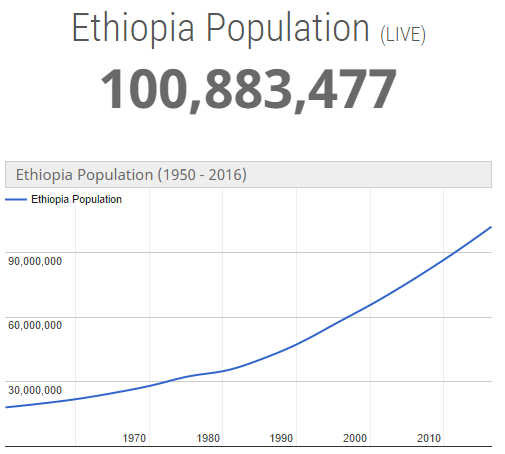

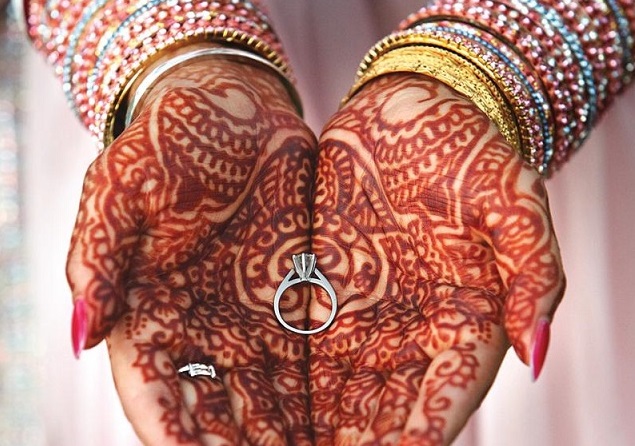

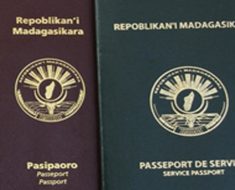


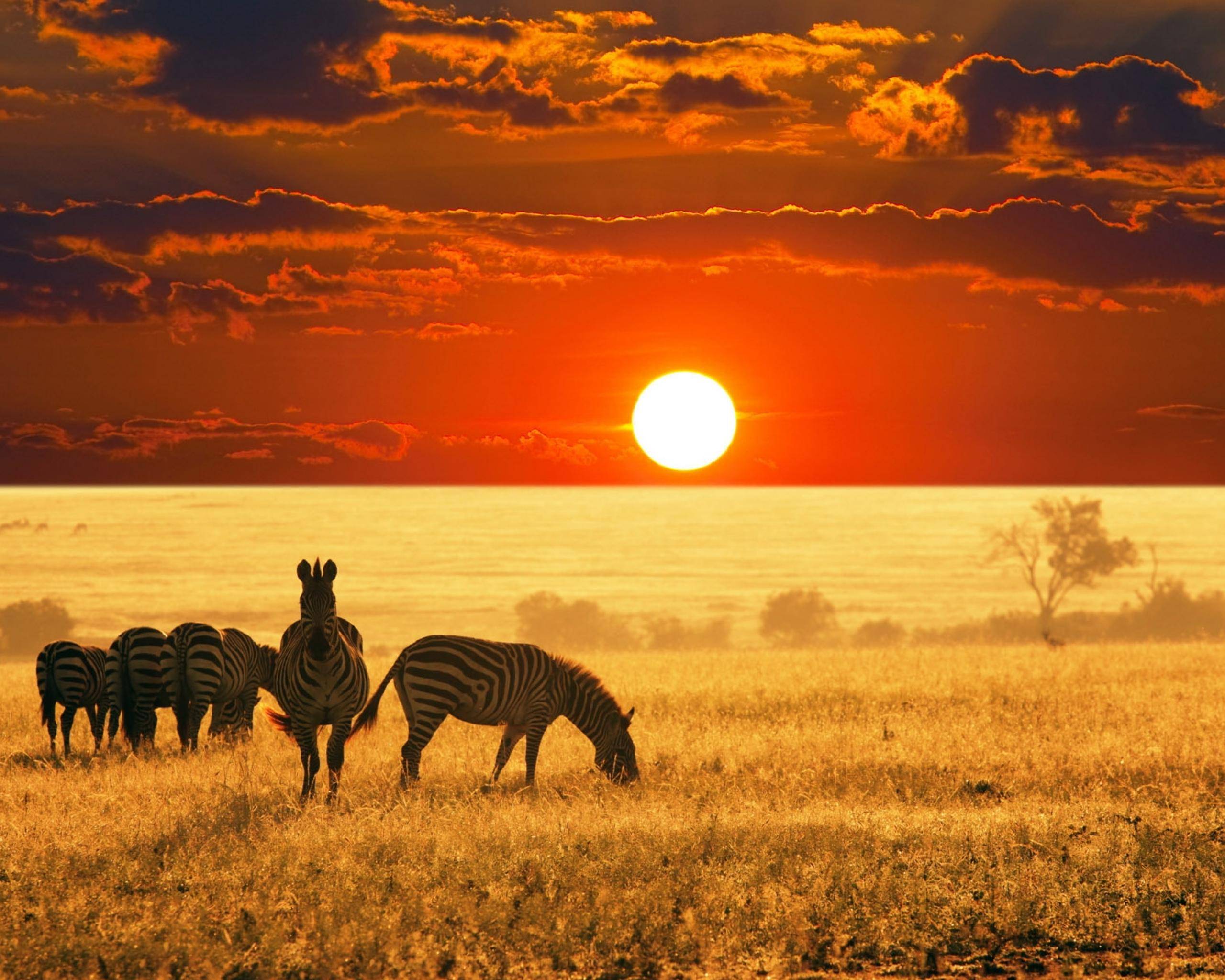


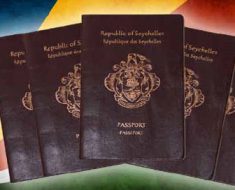



this is authomatically false …….The name “Ethiopia” comes from the Greek words aitho and ops, which together mean “burnt face.” This was how the ancient Greeks referred to the dark-skinned people of eastern Africa. ethiopia is the name of the person which takes from the name of ethiopis
105 million (2017)
is the population
no it comes from the king ethiop himself
did you know that it has one of the 10 biggest university
Humans have not even been around for five million years!!!! A nerd from Europe must have wrote this article.
The Name Ethiopia comes from our ancient leader Ethiop.
the main history of the country is untouch
This article is read only by Ethiopians (according to the comments) except me! Am I the only foreigner who loves Ethiopia. I don’t know why I have some unexplained homesickness for Ethiopia. Maybe I got potential link to that bright country.
Great read thanks
Addis ababadoesnt mean white flower rather “new flower” named by empress Tayitu wife of Menlik ll